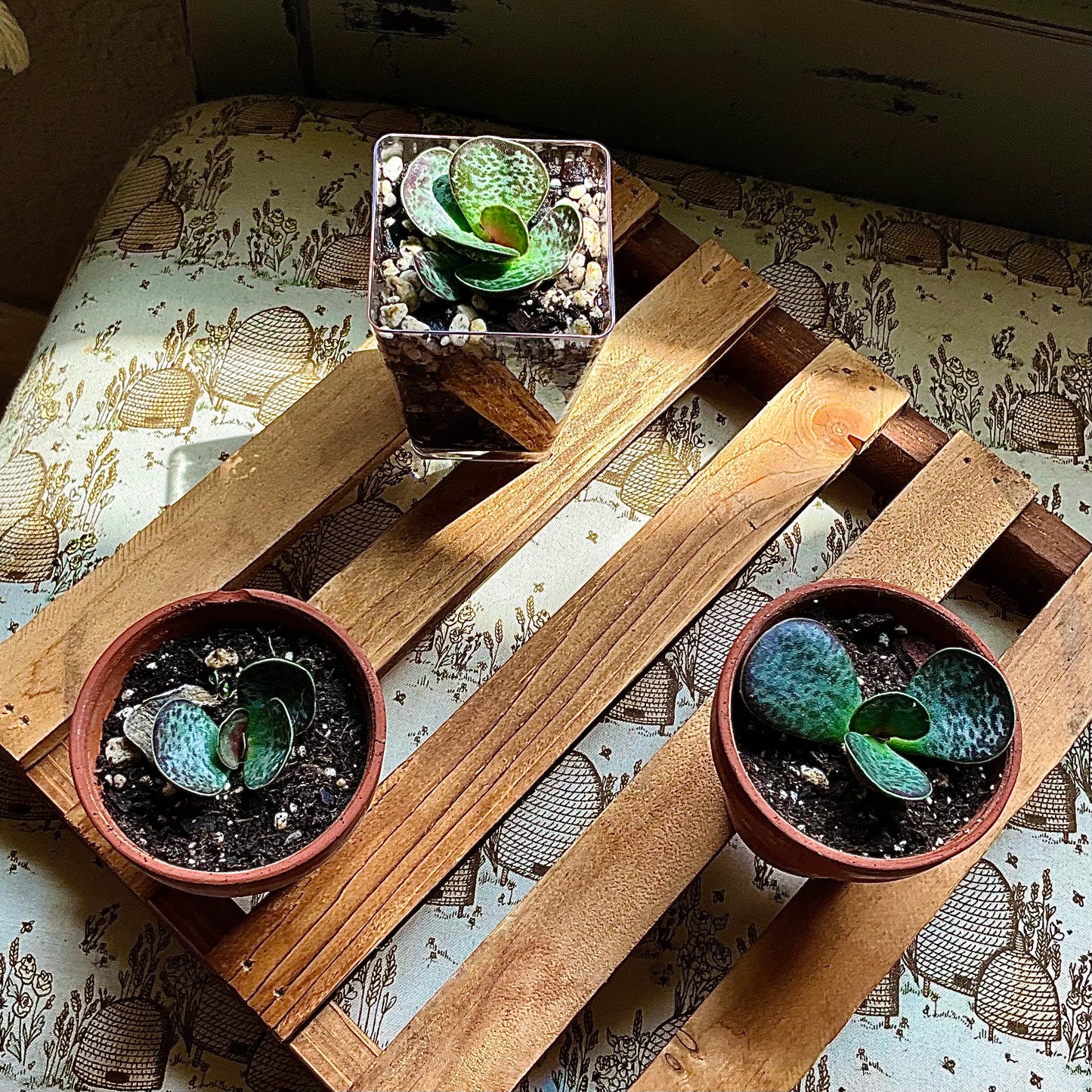Calico Hearts
Calico Hearts
Share
In stock
Calico Hearts | Adromischus maculatus | Chocolate Soldier
Calico Hearts, also known as Chocolate Soldier, is a charming succulent with heart-shaped leaves that feature distinctive patterns resembling calico fabric. Not only are its heart-shaped leaves juicy and chocolate-speckled, it also boasts cheerful rosy red new growth and a thick, hardy trunk. This compact plant adds a touch of whimsy to any indoor succulent collection or terrarium.
Plant Care Needs
• ☀️: Prefers bright, indirect sunlight. Can tolerate some direct sunlight, but avoid prolonged exposure to intense afternoon sun.
• 💦: Allow the soil to dry out partially between waterings. Water thoroughly, then let the soil dry completely before watering again. Typically, water every 10-14 days during the growing season and reduce frequency in winter.
• 🪨: Well-draining soil mix is essential. Use a cactus or succulent mix amended with perlite or coarse sand to improve drainage. We recommend Tits & Grit Cacti & Succulent Mix!
• 🌡️: Thrives in average to warm temperatures between 65°F to 75°F (18°C to 24°C). Protect from frost and freezing temperatures.
• ☁: Low to moderate humidity levels are suitable. Avoid overly humid conditions to prevent fungal issues.
• ✂: Easily propagated from leaf or stem cuttings. Allow cuttings to callous over for a few days before planting in well-draining soil.
• ⚖: Low maintenance once established. Suitable for beginners and experienced gardeners alike.
• 💭:
- Avoid overwatering, as it can lead to root rot. Ensure adequate drainage to prevent water from pooling around the roots.
- Fertilize sparingly during the growing season with a balanced liquid fertilizer diluted to half strength. Avoid fertilizing in winter.
- Prune leggy or dead growth to encourage compact growth and maintain the plant’s attractive appearance.
- Keep an eye out for signs of pests such as aphids or mealybugs, and treat promptly if detected.
- Calico Hearts may go dormant in the winter, during which time they require less frequent watering. Resume regular watering when new growth appears in spring.
Couldn't load pickup availability















